Graham Reid | | 10 min read
John Tavener: The Protecting Veil (played by Steven Isserlis, cello, and the LSO, 1992)
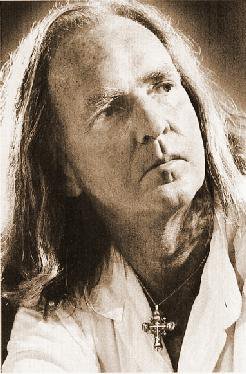
Late in 1992 in one of his increasingly rare interviews, British classical composer John Tavener uncharacteristically hit back at the critics who had been sniping at his most recent work, The Protecting Veil.
After noting that critics want their intellects tickled but had forgotten about the intellect of the heart, he skewered them for their shallowness.
“They don't know the sources from where my music comes. They’re ignorant. They don’t know the Byzantine tone-system. They haven’t read the Gospels probably. They haven’t got a clue where to start. For them, music is a succession of dots on the paper.”
If, from his references to Byzantine musical structure and the Gospels, the composer sounds like some creator of esoteric, marginalised works then the impression couldn’t be more wrong.
The Protecting Veil – a 50-minute piece for cello and performed by Steven Isserlis on the recording – was the biggest selling classical album in Britain last year.
It is a haunting, transcendental work to be sure, but stands at some distance from the recent slew of Mozart recordings, the ”opera for the masses“ marketing drive of the past few years and the edgy nail-biting stuff of some of the younger composers.
It’s an austere moving religious work. Yet it sold by the truckload.
“There must be something lacking that I am able to give through my experience of Orthodoxy,” says Tavener at home in Sussex where he has retreated from the glare of recent publicity. “What I’ve learned from Orthodoxy I am able to impart although whether it is seen as that doesn’t matter at all.
“There is an element of the sacred which has been lost today and I’d have to go back to the Middle Ages to find anything I would call sacred music.”
And not surprisingly, this 49-year-old composer who has said he “is the vessel through whom God speaks” acknowledges he would feel more at home in some earlier time.
“If I had the choice I think the early period of Byzantium in Constantinople would have suited me – although I don’t dwell on that. This is the time I was born into and I’ve got to do something about that.
“Culturally I feel comfortable in Greece which speaks to me in a way that the English nature doesn’t. That is why I try to spend at least six months of the year there.”
That retreat to Greece also allows him to write in an environment far removed from Britain where he is now the most famous and successful of British composers. Like the Pole Henryk Gorecki, whose Symphony No 3 followed The Protecting Veil to the top of the classical charts. Tavener was little known a year ago outside classical circles – and even within it by only a small minority.
Today he is sought after for his views on everything from the marketing of classical albums to make love by, to what sort of record player he has. (For the record, he spoke of spiritual love in answer to the former, and said he was not too worried about equipment but had a Kenwood in answer to the latter).
His striking features - a broad, bare forehead framed by shoulder-length blonde hair – appear frequently in classical magazines and his opinions on philosophy (“we have surrendered the secret knowledge Dante speaks about the intellect of the heart”) to music are sought out.
But his voice is weary now and recent heart surgery has required him to be discriminating about how much of his time he gives to the media.
Yet as a unique voice in Western classical music he has much to offer, especially when he talks of his works as being icon-like to inspire wonder at the sacred.
“One has works of genius by Beethoven, and his last quartets are often called ‘sacred‘. But they aren’t [sacred] in the way I think of sacred art. The Taj Mahal, Egyptian wall paintings, Chartres Cathedral and icons are sacred. Beethoven offered very great human art. But it’s not sacred art.”
For a man whose life has been devoted to such considerations through the vehicle of music. Tavener’s career had a curious beginning. But given the period an especially auspicious one. His first two albums appeared on the Beatles record label Apple back in the late 60s and suddenly this previously unknown bright young thing was hip.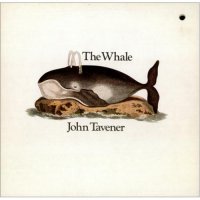
And coincidentally those two avant-garde works, The Whale from 1968 and Celtic Requiem of the following year, have both been reissued in the past three months to tail-end the recent success of the Protecting Veil.
Tavener’s association with the Beatles – notably John Lennon and Ringo Starr, who were ardent supporters – began when the young composer met Lennon at a dinner party and they marked the occasion by swapping avant-garde tapes of their work, Lennon at that time engaging in experimental sounds with Yoko Ono.
The Whale – the premier performance of which was also the inaugural appearance of the London Sinfonietta – is a dramatic rendering of the Jonah story and was released to much acclaim.
Celtic Requiem, commissioned by the London Sinfonietta – also released on Apple with Starr now the prime mover from the by-then defunct Beatles – met with similar critical response for its courageous amalgam of the religious and the profane and its counterpoint of children’s voices with the airy soprano of June Barton.
While the cover notes of the two reissued discs now emphasise the connection with the Beatles and other progressive rock bands of the time, Tavener is dismissive of that.
“My work was very much a reaction against the po-faced theorists who were highly mathematical and grounded in theory.
“I suppose I was something of an angry young man and wanted to break away for method. I never had a great love of pop music and none of those people like Pink Floyd had any influence on me.
“It was a very exciting time but carried its own strain. I’ve never been mad about publicity and there seemed to be a lot of it then. That’s why I now live here in the heart of Sussex and go to Greece as often as I can.”
Ironically Tavener’s early and recent successes have book-ended a 25-year career which has largely been out of the limelight. His works during the 80s, while meeting with critical acclaim and reaffirming the early belief the there was an important individual voice, remained on the periphery of the classical work.
The early promise of The Whale and Celtic Requiem, by general consensus faltered when he overreached himself with the ambitious opera Therese in 1976 which took as its central narrative the crisis of faith of the young nun Saint Therese of Lisieux. In retrospect, however, the work – coming a year before Tavener’s conversion to Orthodoxy – was as much himself as the protagonist.
“I wouldn’t have said that the time, but with hindsight I can see that writing about a particular Catholic saint got out of me what I felt was a wrong direction in Christianity.
“After being brought up a Presbyterian until I was in my thirties I felt completely at home in the Orthodox Church. I was frightened by the power that other churches appeared to exercise over the world. I preferred the more Platonic attitude of the Orthodox Church to the rather strict Aristotelian character of the Catholic Church.”
And of course the esoteric mystery that the Orthodox churches offer appeals to Tavener’s refined, curious intellect.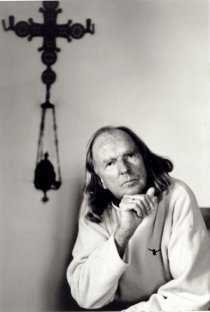
When Tavener speaks this way, and adds that he seriously considered living on a Greek island and writing only for the Orthodox Church, it can sound as if he is removed from the world and the lofty flight of his religious imaginings demand a dour, earnest demeanour.
Not so. He has a wry humour and dryly notes that the liner essay on the reissue of Celtic Requiem strained the connection between a Lennon/Ono album where the couple whispered and shouted each other’s names for 20 minutes and his Nomine Jesu.
“It would seem to me,” he says with mock deliberation, “that there was quite a different nature to the calling out of a scared name to that of John and Yoko calling out each other’s. But...”
Cellist Isserlis, who asked Tavener to write a piece for him little suspecting he would receive such a demanding work, tells of Tavener getting “incredibly drunk at that first [The Protecting Veil] performance. He was so nervous!”
Tavener laughs at the memory and how totally unprepared he was for the subsequent success of the work.
Yet his humour is tempered these days – and the work rate heightened – as he tells of the open heart surgery he has undergone, a leaking valve he still lives with, and the inherited Marfan syndrome heart condition which means he needs plenty of rest. He cannot work most mornings, becomes breathless and notes that as an inherited disease there is a 50 percent chance his as yet unborn child will be a sufferer.
With lectures to present (the one he is now working on is Towards a Sacred Art to be presented at Durham Cathedral) and a number of commissions before him, he admits to being driven despite the need for rest. He manages to write for about six hours a day.
Before him is a commission from the London Symphony Orchestra (originally for viola but now modified to include choral and percussion because “I didn’t want to write another Protecting Veil”), the possibility of a joint commission from Athens and New York, another orchestral piece, and he’s thinking about “a real opera.”
It is almost certain – considering the demanding nature of his other works – that little of what he is writing will be easy on its performers.
Isserlis has often spoken of the sheer physical effort required to play The Protecting Veiil and Patricia Rozario, who has sung the lead in Taverner’s most recent work, Mary of Egypt, says her part was a huge challenge. “It was both extremely high and extremely low so I knew I had to pace myself [during the 100-minute work]. It drew an enormous amount of energy out of me; when I had finished I realised I was exhausted.”
“I have been writing at a fever pitch since the heart condition came on two years ago,” says Tavner,” and subconsciously I feel a sense of urgency. I had two operations, the first to remove a cyst from my jaw before the heart operation. When I came round I immediately asked for manuscript paper – because there was a good chance of not surviving – and began sketching out ideas for a piece on the Apocalypse.
“It will be performed on my 50th birthday in the Albert Hall next year and although it is difficult to say such a thing is happening now – the possible terrors of that Book of Revelations – an awful lot seems to be happening. I’m certainly not one of those ‘the end of the world is nigh’ types, but ecologically things look very bleak.”
For this ambitious work he has collaborated with an Orthodox nun who has compiled the text of the Apocalypse which Tavener says he would not have been able to make sense of otherwise. She has tied up the loose ends and given it a geometric shape.
For his part he is writing music which the orchestra and choral section will perform in the Albert Hall’s High Gallery from where the disasters come raining down. The character of St John, whose name is attributed to this final section of the Bible, will be on the stage below along with other terrestrials.
“The work may sound bleak but is full of great beauty. It is also icon-like and I have taken an almost geometric pattern of sound much as icon painters use particular colours to signify particular religious relationships.”
Tavener’s reference to the icon-like quality of this work and the use of specific sounds as religious signifiers has its parallel in this most recent work, Mary of Egypt, which he insists is not an opera but “a moving icon” because it has none of the conventional development of an opera and he wants to direct listeners, by the metaphor of iconography, to a particular way of listening.
Throughout, the work is punctuated by an octave F drone motif from violins, which he says has spiritual resonances and represents an eternity note.
“It has dramatic effects. Because one presumes God is present all the time in everything, when I take that note off it is in order to show Mary and the other protagonists that God is now not there.
“It is a very contemplative piece even though she was the whore of Alexandria. It’s a kind of divine paradox. The dance towards the end celebrates all kinds of love – spiritual, carnal, religious – and in the end we can’t judge anything. Not the prodigal son, not the woman taken in adultery, none of them.
The judgment of God is beyond our comprehension. As is the judgement of his contemporaries, he admits. The popularity of The Protecting Veil has taken him completely unexpectedly yet he senses the openness of the work to interpretation has allowed all listeners to find something for themselves in it.
“The only rumblings I had that it might have something for others was after the rehearsals when the musicians kept applauding. I had this feeling if it was meeting with that kind of appreciation it might touch people. The fact that it has is maybe because it doesn’t have a text and the cello is close to the sound of the human voice.
“The cello represents the mother of God as far as I am concerned. I don’t give a damn if anyone else hears it as that. They can hear it just as a long lyrical line on cello.”
Yet while Tavener says he frequently doesn’t feel much affinity with his musical contemporaries – he finds Henryk Gorecki’s music bland and sweet, prefers the toughness of the ascetic Estonian Arvo Part, enjoys Schnittke and says it was Stravinsky who inspired him to write – he touches the hearts of his listeners.
He tells of receiving a letter from a young girl after the first performance of The Protecting Veil who, now knowing it referred to a particular Orthodox feast which commemorates the Virgin’s appearance at a church in Constantinople in the early 10th century, asked him what the title meant.
“She said she thought it meant I wanted to protect truth and beauty. That touched me that she had sent that because what it means to me when I am working in my studio means something quite different when it goes out into the world. At that point it is up to others to interpret...and I wouldn’t want it any other way.”

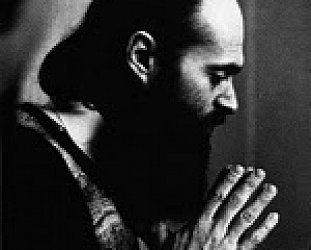
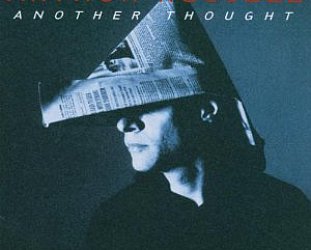




post a comment